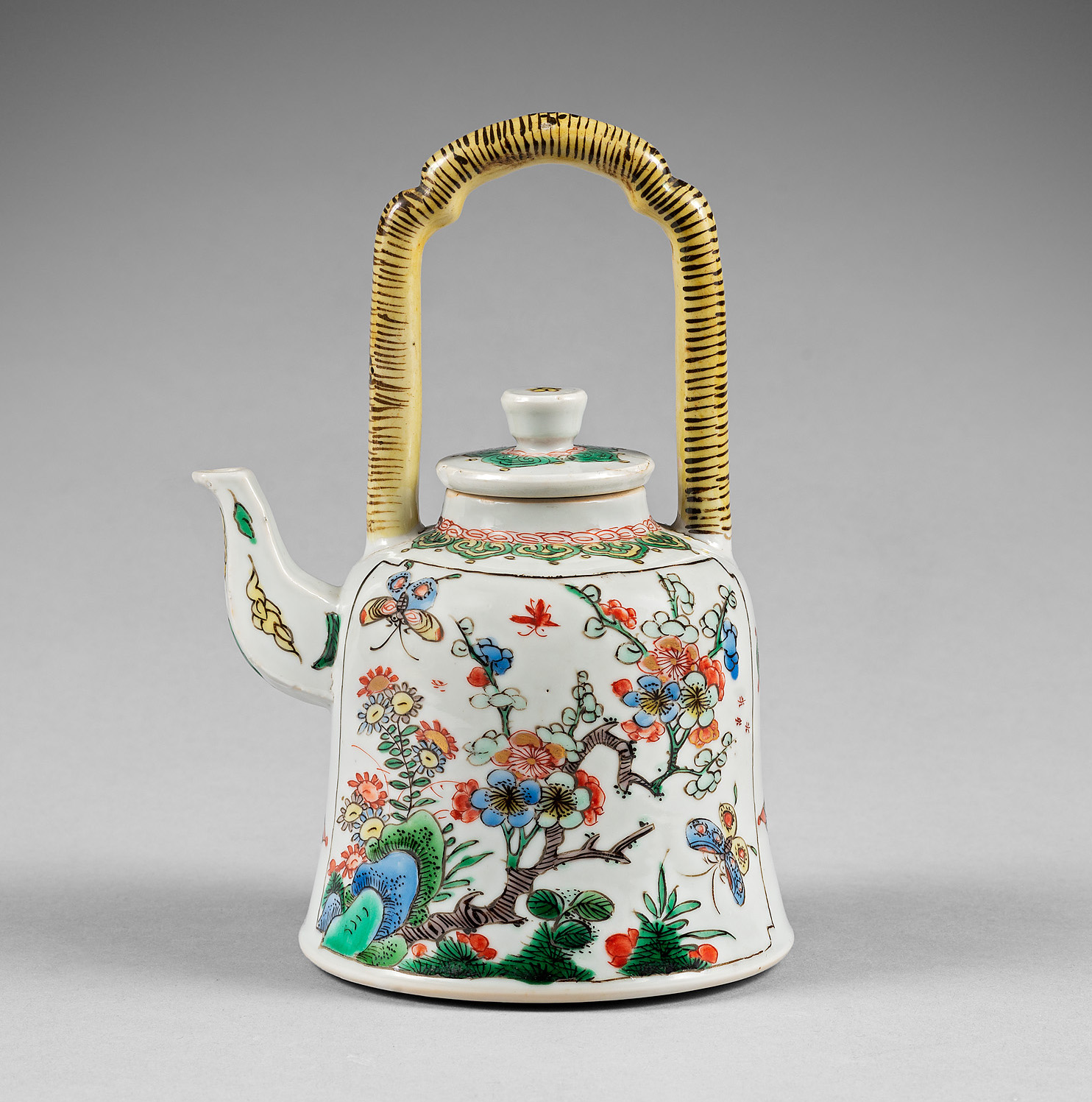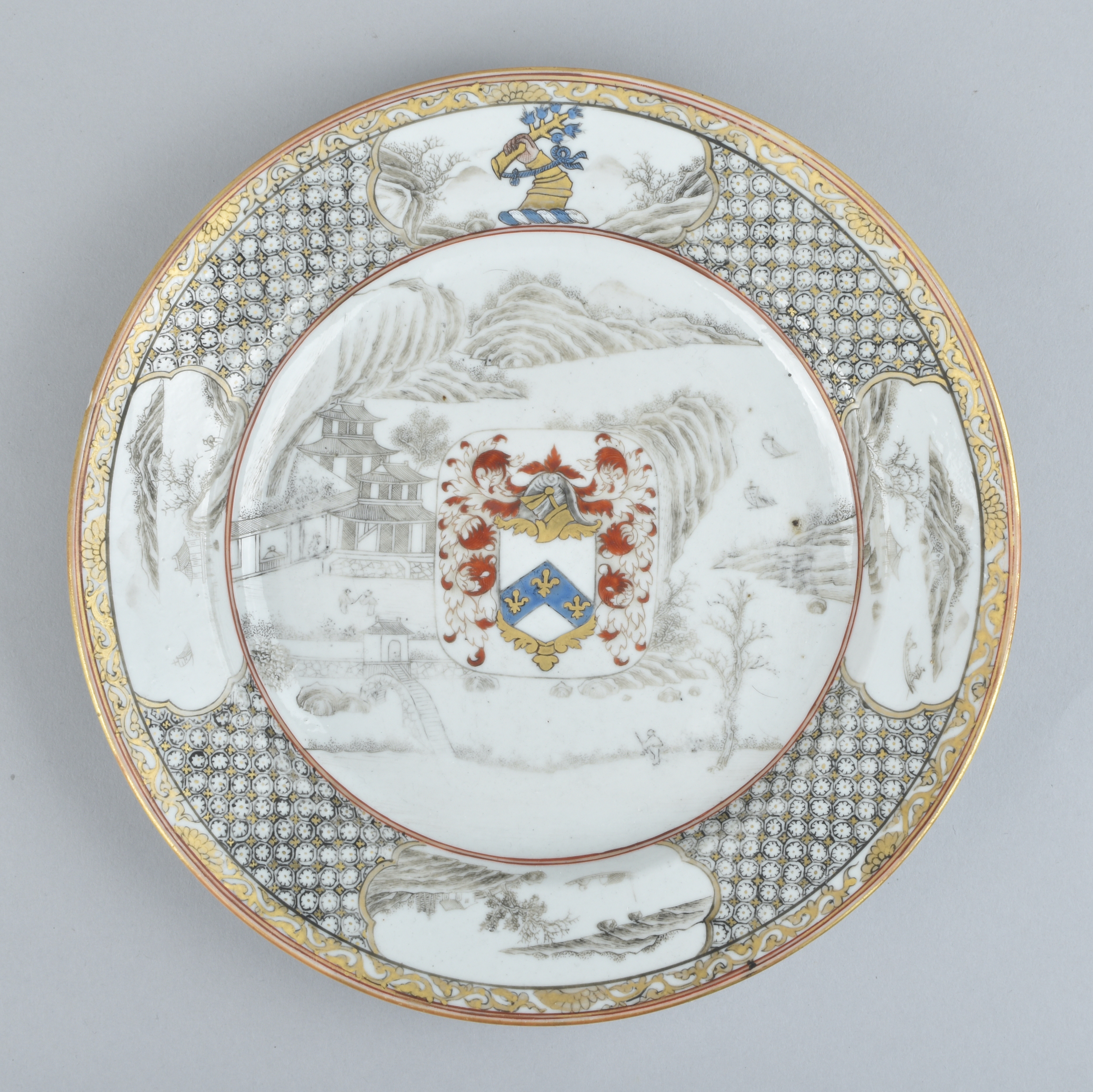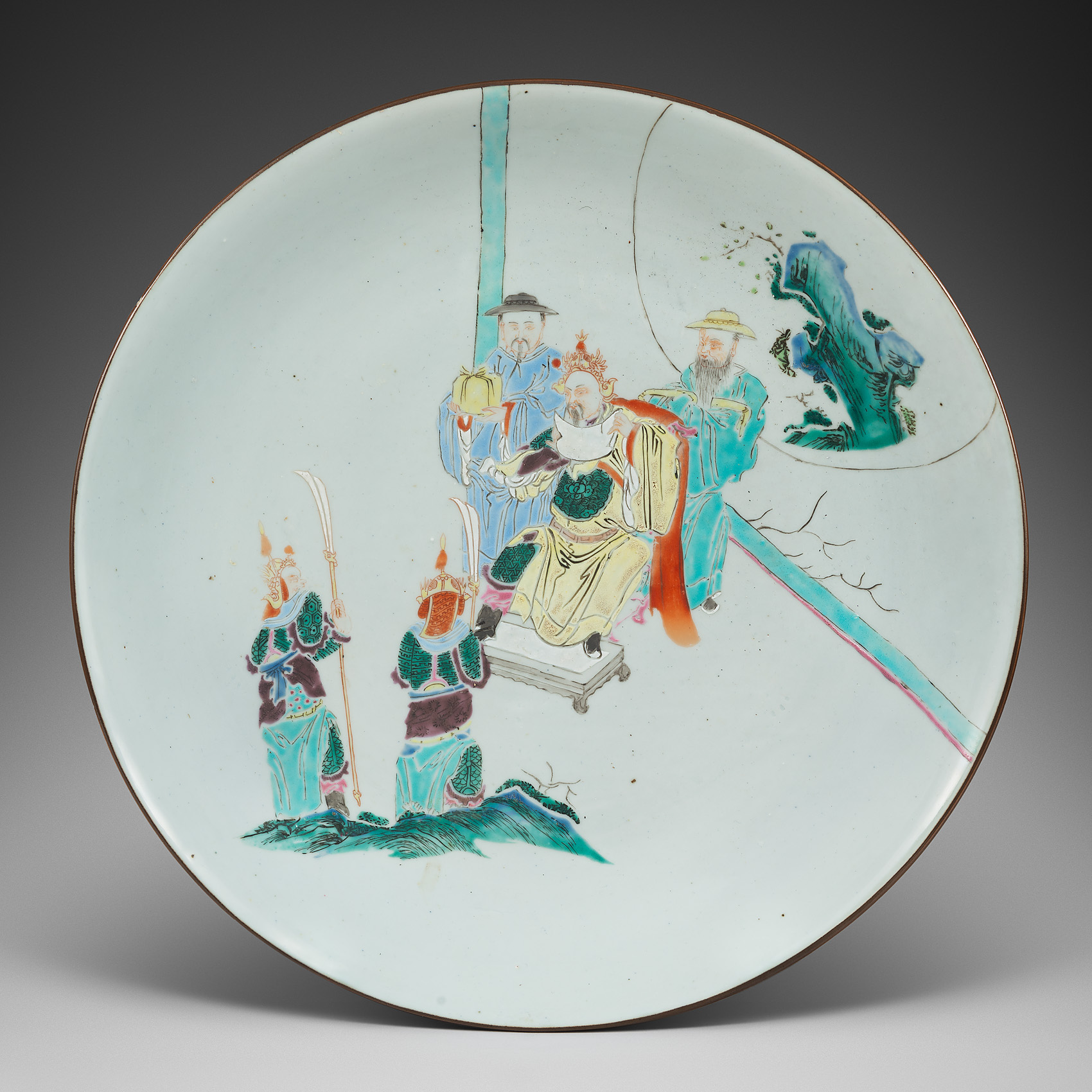



A Chinese grisaille plate “Les pèlerins de l’isle de Cythère”. Qianlong
After the engraving “Les pèlerins de l’isle de Cythere » (1708), by Bernard Picart (1673-1733), painted en grisaille, gilt and iron red, the central roundel depicting a heart-decorated ‘Cupid’ (‘Eros’) with staff and torch guiding a pilgrim couple to a travel by boat to the Greek Isle of Cythere, the couple with sharing a cup of wine, two boats and the island in the background, all within a gilt spearhead border, the outer rim with shell and scroll gilt and iron red border.
- Country:
- China
- Period :
- Qianlong (1736-1795), ca. 1745
- Material:
- Porcelain
- Dimension:
- 8.66 in. (22 cm)
- Reference :
- C956
- Status:
- sold
Related works
An identical plate, from the Musée Adrien Dubouché (Limoges / France) is illustrated by Christine Shimizu in L’odyssée De La Porcelaine Chinoise – Collections du Musée National de Céramique, Sèvres et du Musée National Adrien Dubouché, Limoges, p. 216, no. 169.
For two others plates, see C.J.A. Jörg, Chinese Export Porcelain, Chine de Commande from the Royal Museums of Art and History in Brussels, p. 80 ; M. Beurdeley, Porcelaine de la Compagnie des Indes, p. 181, cat. 122.
Notice
This subject matter was the inspiration of French painter Jean-Antoine Watteau for the painting The Embarkation for Cythera (“L’Embarquement pour Cythère”) – also known as “Voyage to Cythera” and “Pilgrimage to the Isle of Cythera”. Watteau submitted this painting, now in the Louvre, Paris, to the Royal Academy of Painting and Sculpture as his reception piece in 1717. A second version of the work, sometimes called Pilgrimage to Cythera, was painted by Watteau about 1718 or 1719 and is in the Charlottenburg Palace, Berlin.
The myth of the island of Cythera was a great success in the libertine society of the 18th century, the island being considered since Antiquity as the residence of Venus, goddess of love. The presence of Cupid on the painting helps to reinforce this evocation.

























